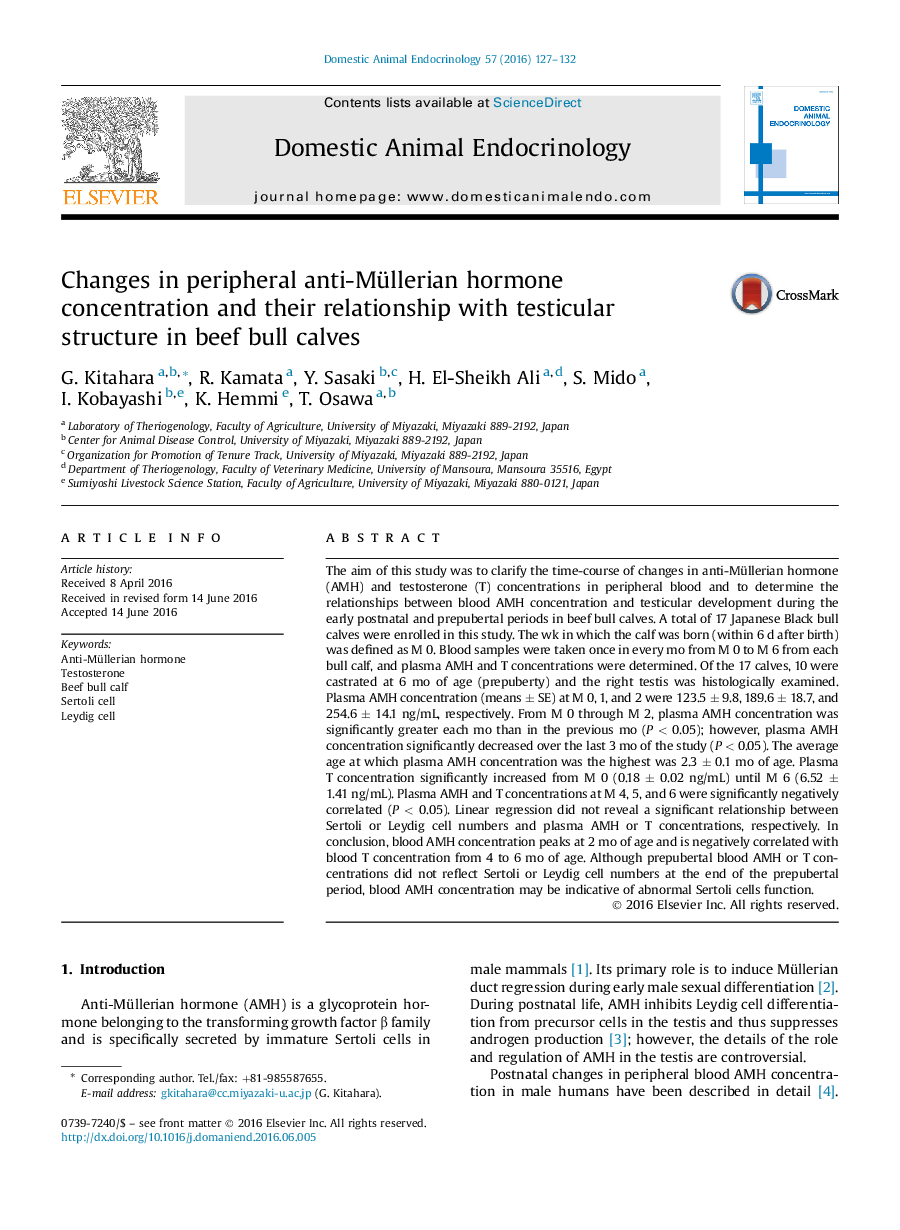| کد مقاله | کد نشریه | سال انتشار | مقاله انگلیسی | نسخه تمام متن |
|---|---|---|---|---|
| 2393417 | 1551502 | 2016 | 6 صفحه PDF | دانلود رایگان |
• Blood anti-Müllerian hormone (AMH) concentration at 2 mo of age was the highest for postnatal 6 mo.
• Blood testosterone (T) concentration gradually increased for postnatal 6 mo.
• There were negative correlations between AMH and T during 4 to 6 mo of age.
• Blood AMH concentration did not reflect Sertoli cell number.
• Blood AMH concentration may be indicative of abnormal Sertoli cells function.
The aim of this study was to clarify the time-course of changes in anti-Müllerian hormone (AMH) and testosterone (T) concentrations in peripheral blood and to determine the relationships between blood AMH concentration and testicular development during the early postnatal and prepubertal periods in beef bull calves. A total of 17 Japanese Black bull calves were enrolled in this study. The wk in which the calf was born (within 6 d after birth) was defined as M 0. Blood samples were taken once in every mo from M 0 to M 6 from each bull calf, and plasma AMH and T concentrations were determined. Of the 17 calves, 10 were castrated at 6 mo of age (prepuberty) and the right testis was histologically examined. Plasma AMH concentration (means ± SE) at M 0, 1, and 2 were 123.5 ± 9.8, 189.6 ± 18.7, and 254.6 ± 14.1 ng/mL, respectively. From M 0 through M 2, plasma AMH concentration was significantly greater each mo than in the previous mo (P < 0.05); however, plasma AMH concentration significantly decreased over the last 3 mo of the study (P < 0.05). The average age at which plasma AMH concentration was the highest was 2.3 ± 0.1 mo of age. Plasma T concentration significantly increased from M 0 (0.18 ± 0.02 ng/mL) until M 6 (6.52 ± 1.41 ng/mL). Plasma AMH and T concentrations at M 4, 5, and 6 were significantly negatively correlated (P < 0.05). Linear regression did not reveal a significant relationship between Sertoli or Leydig cell numbers and plasma AMH or T concentrations, respectively. In conclusion, blood AMH concentration peaks at 2 mo of age and is negatively correlated with blood T concentration from 4 to 6 mo of age. Although prepubertal blood AMH or T concentrations did not reflect Sertoli or Leydig cell numbers at the end of the prepubertal period, blood AMH concentration may be indicative of abnormal Sertoli cells function.
Journal: Domestic Animal Endocrinology - Volume 57, October 2016, Pages 127–132
